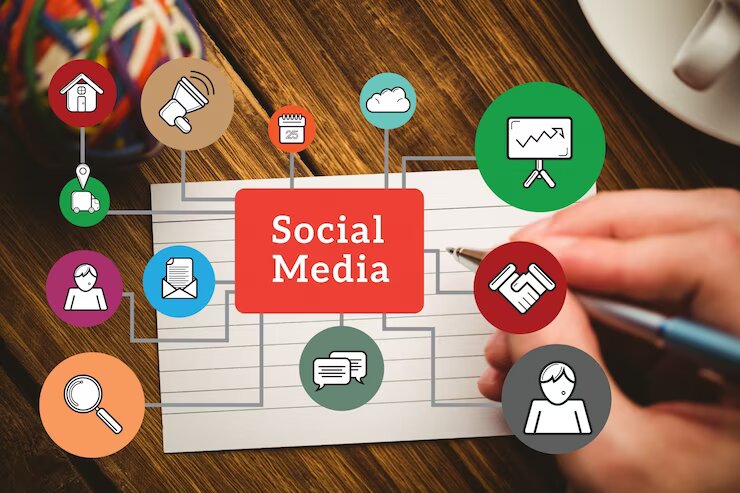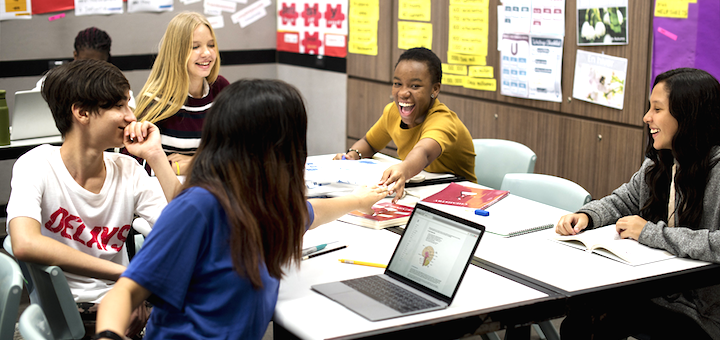The Impact of Social Media on Student Learning
In today’s digital era, social media is a major part of students’ daily lives. Platforms like Instagram, TikTok, X (formerly Twitter), and Snapchat offer endless streams of content, instant communication, and global connectivity. While these platforms provide valuable tools for collaboration and creativity, they also raise critical questions about their influence on academic outcomes. Educators, parents, and policymakers are increasingly concerned about the relationship between social media and student learning—and rightly so.
This blog explores the benefits, drawbacks, and overall impact of social media on students’ educational experiences, offering practical insights for balancing its use in an academic setting.
The Ubiquity of Social Media in Students’ Lives
According to a 2024 Pew Research study, over 90% of teens use social media daily, with many checking their accounts multiple times per hour. This constant connectivity influences how students think, learn, and interact with information.
Whether it’s a student watching a math tutorial on YouTube, joining a study group via WhatsApp, or being distracted by TikTok during class, the line between educational and recreational use of social media has become increasingly blurred.
Positive Effects of Social Media on Student Learning
While concerns often dominate the conversation, there are notable benefits to integrating social media into education.
1. Enhanced Communication and Collaboration
Social media makes it easier for students to:
- Form online study groups
- Share notes and resources
- Ask questions outside of class hours
- Collaborate on group projects via messaging apps or Facebook groups
This peer-to-peer interaction fosters teamwork, enhances understanding, and encourages active learning.
2. Access to Educational Content
Platforms like YouTube, LinkedIn, and even Instagram are home to thousands of educational creators who offer tutorials, summaries, and tips on every subject imaginable.
- Short videos simplify complex topics
- Infographics provide visual learning aids
- Podcasts and reels introduce new perspectives
This on-demand learning allows students to explore subjects at their own pace and learn in ways that suit their style.
3. Motivation and Engagement
Some students find inspiration and motivation through academic influencers, peer content creators, and positive educational communities on platforms like TikTok and Reddit.
Additionally, teachers can use social media to post reminders, share success stories, and engage with students in a medium they’re already comfortable with.
4. Skill Development
Using social media responsibly can help students develop 21st-century skills, including:
- Digital literacy
- Online etiquette
- Content creation
- Information curation
These skills are increasingly relevant in modern careers and higher education.
Negative Effects of Social Media on Student Learning
Despite the upsides, the drawbacks of excessive or unregulated social media use can significantly impair academic performance.
1. Decreased Attention Span
Frequent scrolling through bite-sized content trains the brain to crave instant gratification. This can lead to:
- Difficulty focusing in class
- Reduced ability to engage with long-form content
- Poor reading comprehension
Students accustomed to short videos may struggle with in-depth academic tasks like essay writing or research.
2. Increased Distractions
Notifications, likes, and algorithm-driven feeds constantly compete for attention. As a result, students:
- Are tempted to check phones during lessons
- Multitask ineffectively while studying
- Take longer to complete assignments
Even short interruptions can disrupt the learning process and reduce retention.
3. Mental Health Struggles
Social media can negatively affect students’ mental well-being, which in turn impacts their academic performance. Common issues include:
- Anxiety and depression linked to comparison culture
- Cyberbullying and online harassment
- Sleep deprivation due to late-night screen use
A mentally unhealthy student is less likely to engage, participate, or succeed in school.
4. Spread of Misinformation
Not all content on social media is accurate. Students may encounter:
- Pseudoscience and fake news
- Misleading study hacks
- Biased or unverified sources
Without proper media literacy, students may internalize false information, which undermines their academic integrity.
Striking a Balance: How to Guide Social Media Use in Education
The goal is not to ban social media entirely but to teach students how to use it responsibly and purposefully.
1. Digital Literacy Education
Schools should provide lessons on:
- Evaluating online sources
- Understanding algorithms and echo chambers
- Spotting misinformation
- Protecting privacy and digital footprints
By empowering students to think critically, educators can transform social media into a learning tool.
2. Establish Healthy Boundaries
Teachers and parents can help students:
- Set screen time limits
- Turn off notifications during homework hours
- Use apps like Forest or Focus Mode to minimize distractions
- Schedule “tech-free” breaks
These habits support better time management and concentration.
3. Incorporate Social Media into Curriculum
Instead of fighting it, educators can embrace social media as an educational medium:
- Assign research projects based on trending topics
- Use Instagram for visual storytelling or digital portfolios
- Host debates on digital ethics
- Ask students to analyze viral content through academic lenses
When used creatively, social platforms can foster critical thinking, creativity, and civic engagement.
4. Encourage Positive Online Behavior
Promote a culture of respect, inclusion, and empathy online. Teach students how to:
- Comment constructively
- Avoid harmful content
- Report inappropriate behavior
- Support peers experiencing cyberbullying
Character education should extend into digital spaces.
The Role of Parents and Educators
Both parents and teachers play essential roles in shaping students’ relationship with social media.
What Educators Can Do:
- Integrate media literacy into lessons
- Model balanced social media habits
- Maintain open communication about digital challenges
What Parents Can Do:
- Monitor usage without invading privacy
- Foster open dialogue about what students see online
- Encourage offline activities and hobbies
A united front helps students develop healthy, informed digital habits.
The Future of Social Media in Education
As technology continues to evolve, the line between formal education and digital interaction will blur further. Emerging trends include:
- AI-driven learning apps on social media platforms
- Virtual classrooms and communities hosted on social networks
- Gamified learning through social media challenges
To harness these tools effectively, educators must stay informed, flexible, and student-centered.
Final Thoughts
The intersection of social media and student learning is complex and evolving. While it presents undeniable challenges, it also offers powerful opportunities for innovation, connection, and personalized education.
The key lies in guidance, not restriction. By teaching students to use social media as a supplement rather than a substitute for deep learning, we can prepare them for a future where digital fluency is as important as academic achievement.



